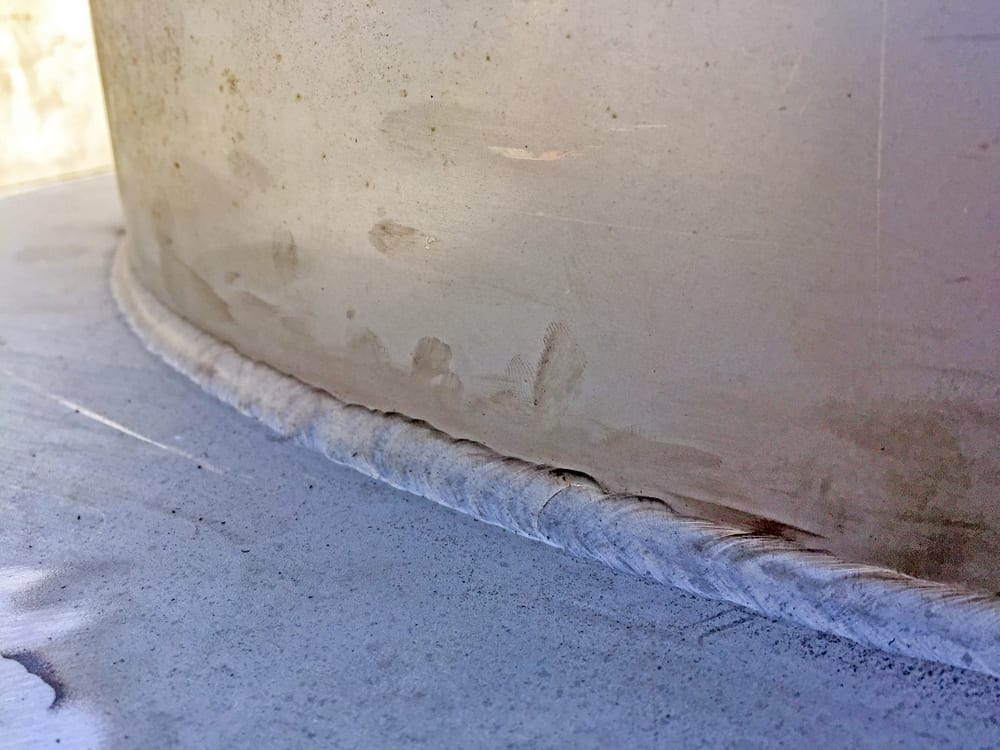Recognizing the Causes and Solutions for Undercut Welding in Steel Manufacture Procedures
In the world of steel manufacture procedures, the incident of undercut welding postures a substantial challenge that requires a comprehensive understanding of its causes and viable solutions. The elaborate interplay of numerous factors throughout welding procedures can bring about this unwanted sensation, affecting the architectural stability and general high quality of the bonded joints - Preventing weld undercut. By exploring the origin triggers of undercut welding and checking out efficient remedial measures, fabricators can boost the criterion of their handiwork and guarantee the production of flawless steel parts
Typical Reasons For Undercut Welding
Frequently overlooked in steel construction, undercut welding occurs as a result of numerous aspects that demand thorough interest and experience to be properly alleviated. One typical reason for undercut welding is extreme warm input. When the heat input is expensive, it can bring about the melting and subsequent erosion of the base material along the sides of the weld joint, creating a groove or undercut. Furthermore, inappropriate welding techniques, such as making use of the wrong welding angle or take a trip speed, can also add to damage development. Inadequate securing gas coverage is an additional essential variable that can lead to damaging. Inadequate gas insurance coverage stops working to protect the weld pool sufficiently, leading to oxidation and undercut flaws. Moreover, the option of welding criteria, such as voltage, present, and cord feed speed, plays a considerable role in the incident of undercut welding. Comprehending these usual reasons is important for applying safety nets and ensuring premium welds in steel manufacture processes.
Impact of Incorrect Welding Parameters
Incorrect welding criteria can considerably endanger the integrity and high quality of bonded joints in steel fabrication processes. The influence of wrong welding parameters shows up in various methods, leading to architectural weak points and defects in the welded elements. Careful focus to welding parameters is critical to make sure the manufacturing of high-quality welds with the preferred mechanical residential properties and architectural honesty.
Effect of Improper Torch Angle
Improper lantern angle in welding procedures can substantially influence the quality and stability of the final weld joints in metal manufacture procedures. Damaging is a common welding issue where a groove develops along the weld toe, compromising the joint and compromising its architectural stability.
A lantern angle that is also high can cause not enough infiltration, incomplete blend, and boosted spatter. On the various other hand, a torch angle that is as well shallow can lead to excessive penetration, burn-through, and distortion of the base product. Preventing weld undercut. Appropriate torch angle is crucial for ensuring consistent weld top quality, strength, and appearance
To avoid damaging and various other flaws brought on by incorrect torch angles, welders have to be educated to keep the right lantern angle throughout the welding procedure. Normal surveillance and adjustment of lantern angles during welding can assist achieve audio welds with marginal issues.
Role of Inadequate Welding Strategies

Another facet of insufficient welding techniques is improper weld preparation. Inadequate cleaning of the base metals, incorrect joint layout, Click Here or not enough side prep work can all add to damage welding. Inadequate protecting gas protection or using the wrong type of gas can result in insufficient combination and the formation of undercut defects.
To address the duty of insufficient welding methods in metal fabrication procedures, it is essential to give detailed training for welders. Appropriate education on welding parameters, joint prep work, and protecting gas selection can aid avoid undercut welding and ensure high-quality welds in steel construction jobs.
Effective Solutions for Undercut Welding
Resolving undercut welding in metal fabrication needs executing reliable options to enhance weld high quality and structural honesty. Among the main remedies to deal with undercut is to adjust welding specifications such as voltage, current, and take a trip rate to make sure correct warm input and blend. By fine-tuning these settings, welders can protect against extreme melting of the base steel and filler material, minimizing the possibility of undercut development.
Additionally, appropriate joint prep work is essential in protecting against undercut. Guaranteeing tidy base metal surfaces without contaminants and using the proper bevel angle can help promote far better weld penetration and decrease the danger of undercut - Preventing weld undercut. Using suitable welding methods, such as oscillating the torch or weaving, can likewise assist in distributing warm equally and filling up the weld joint appropriately, decreasing the possibility of undercut flaws
Furthermore, selecting the appropriate welding consumables, consisting of electrodes and filler steels, is essential in reducing undercut. Utilizing materials with suitable chemical structures and mechanical residential or commercial properties can add to attaining audio welds with marginal undercut. Normal inspection and quality assurance steps ought to likewise be executed to find and address undercut issues quickly, guaranteeing the general integrity of fabricated metal components.

Final Thought
Finally, comprehending the causes and services for undercut welding in metal fabrication procedures is vital for attaining high-grade welds. By resolving typical causes such as incorrect welding parameters, inappropriate lantern angle, and insufficient welding methods, welders can prevent damaging and make certain strong, resilient welds. It is vital to focus on these factors and apply reliable i loved this services to improve the total welding process and end product high quality.
